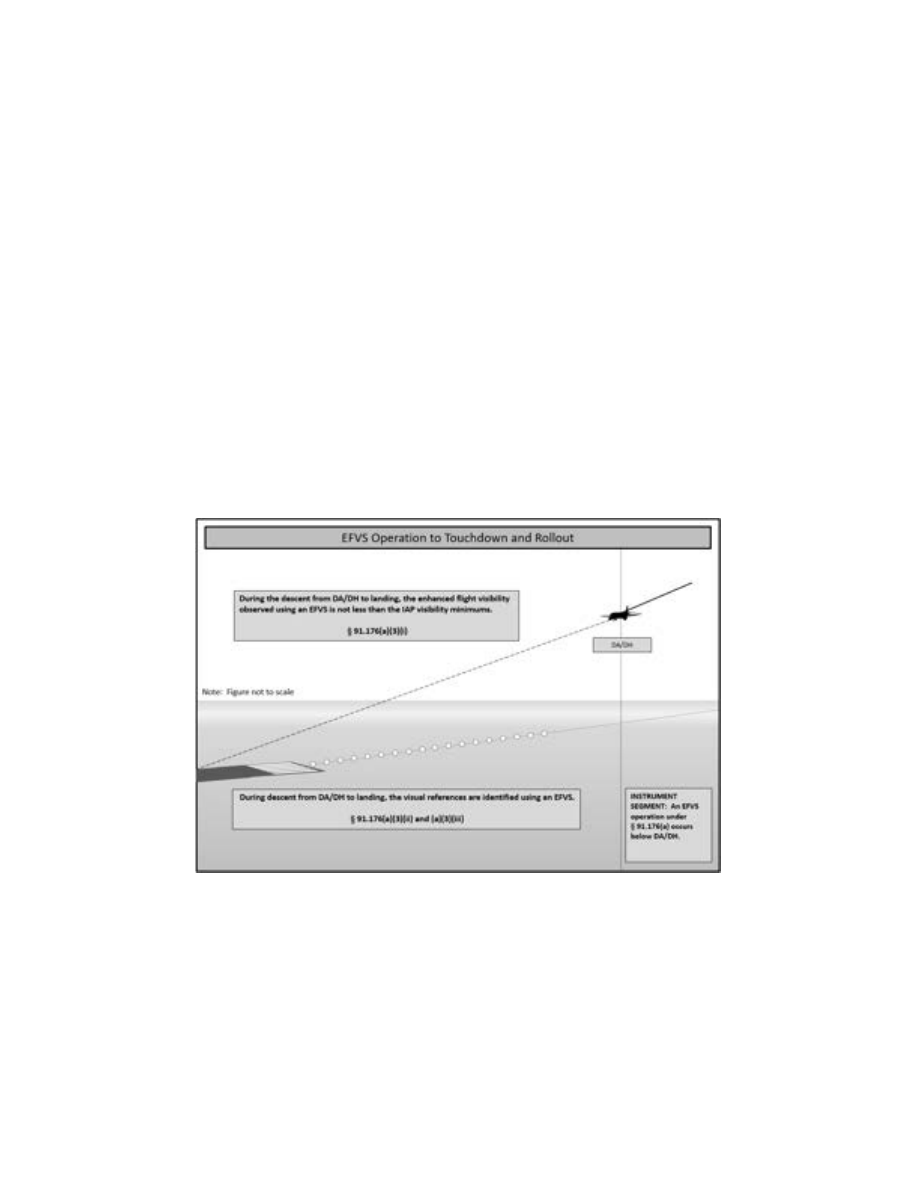
AIM
4/20/23
5
−
4
−
61
Arrival Procedures
a HUD (or equivalent display) allows the pilot to continue looking forward along the flightpath throughout the
entire approach, landing, and rollout.
An EFVS operation is an operation in which visibility conditions require an EFVS to be used in lieu of natural
vision to perform an approach or landing, determine enhanced flight visibility, identify required visual
references, or conduct a rollout. There are two types of EFVS operations:
1.
EFVS operations to touchdown and rollout.
2.
EFVS operations to 100 feet above the touchdown zone elevation (TDZE).
b. EFVS Operations to Touchdown and Rollout.
An EFVS operation to touchdown and rollout is an
operation in which the pilot uses the enhanced vision imagery provided by an EFVS in lieu of natural vision to
descend below DA or DH to touchdown and rollout. (See FIG 5
−
4
−
32.) These operations may be conducted only
on Standard Instrument Approach Procedures (SIAP) or special IAPs that have a DA or DH (for example,
precision or APV approach). An EFVS operation to touchdown and rollout may not be conducted on an approach
that has circling minimums. The regulations for EFVS operations to touchdown and rollout can be found in
14 CFR § 91.176(a).
FIG 5
−
4
−
32
EFVS Operation to Touchdown and Rollout
c. EFVS Operations to 100 Feet Above the TDZE.
An EFVS operation to 100 feet above the TDZE is an
operation in which the pilot uses the enhanced vision imagery provided by an EFVS in lieu of natural vision to
descend below DA/DH or MDA down to 100 feet above the TDZE. (See FIG 5
−
4
−
33.) To continue the approach
below 100 feet above the TDZE, a pilot must have sufficient flight visibility to identify the required visual
references using natural vision and must continue to use the EFVS to ensure the enhanced flight visibility meets
the visibility requirements of the IAP being flown. These operations may be conducted on SIAPs or special IAPs
that have a DA/DH or MDA. An EFVS operation to 100 feet above the TDZE may not be conducted on an
approach that has circling minimums. The regulations for EFVS operations to 100 feet above the TDZE can be
found in 14 CFR § 91.176(b).